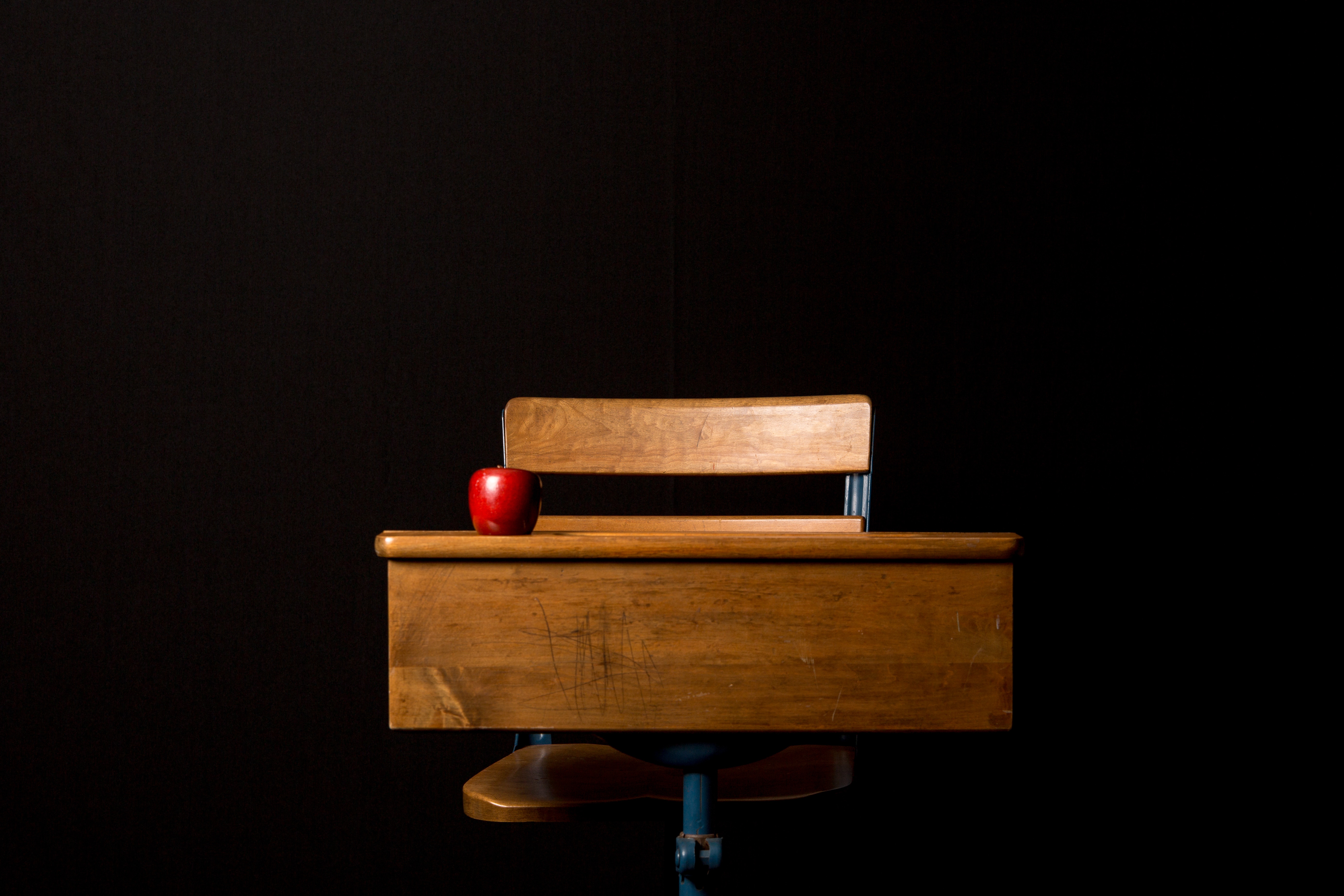Stuffed between the sections of the Globe and Mail last week was a fairly thick, glossy publication entitled Our Kids: Canada’s Private School Guide, an annual digest that I’ve browsed through occasionally, primarily out of an educator’s interest in the schools that offer an alternative to the various provinces’ public education systems. And this issue seems little different from previous ones, as the factual information it provides is supplemented with ads for certain private schools — often called “independent schools” these days — featuring glossy pictures of happy, fun-loving student faces, many of those students in uniform.
The guide lists 50 schools from across Canada that have boarding facilities — 32 in Ontario alone — and in a paragraph that focuses on the advantages of boarding at the school one attends, I read the following: “Boarding schools allow students and faculty to live on campus, and boarders typically live on site for the duration of the academic year. Boarding offers an immersive academic and social experience…. The value of boarding is found within the rich experiences… that aren’t available in other settings.” (Our Kids: Canada’s Private School Guide, 19th annual edition, Our Kids Media, 2017)
Reading this positive description of boarding school advantages, I see a couple of words — “campus”, “faculty” — that would never have been applied to Indian residential schools, but the gist of the guide’s description is not very different from what a residential school administrator might have said to an indigenous parent sixty years ago. Certainly, the early IRS institutions were pretty bleak places, compelling students to spend half their day working in some manual or domestic capacity, the classroom experience mostly “learn by rote”, and the punishments of a kind that no school today would tolerate. Those early IRS schools would have offered little in the way of the athletic, recreational, and social opportunities one would expect to find at a Canadian boarding school these days. And in the years before anthropology and sociology made people more aware of the importance of traditional culture and language to native tribes, residential schools would have been places where “white” beliefs and practices were extolled, and where “English only” (or French-only) was the strictly-enforced rule.
But the Indian residential schools didn’t stay like that. The half-day of manual or domestic work was gone by the 1950s, and the teachers attracted by better salaries were less Mr. Gradgrind of Dickens’ Hard Times and more like “Our Miss Brooks” on TV. Across the country, in schools of all kinds, arbitrary corporal punishment — the slap on the head, the rap with a ruler — was increasingly a thing of the past. Administrators like Canon S.H. Middleton, the long-time Principal of St. Paul’s Anglican Residential School on Alberta’s Blood (Kainai) Reserve, and, later, my father, the Rev. J.E. DeWolf, knew what a good boarding school was supposed to offer, and a wide variety of sports, recreational activities, uniformed groups like Brownies and Boy Scouts, and social events like dances and movie shows filled out the school week. In his book Indian School Days, Basil Johnston details with remarkable recall his time at St. Peter Clavier School at Spanish, Ontario, in the early 1940s, and even in that strict Jesuit environment, he and his classmates enjoyed hockey games, other sports, and, more popular with the girls, choir practices and plays.
The current narrative about Indian residential schools does great disservice to indigenous parents, painting them all as adamantly opposed to boarding school enrolment for their children, even when their traditional way of life was disappearing, even when there was no day school within 100 miles, even when their remote location made social interaction difficult (if not impossible), and even when conditions in the home or community were not at all conducive to healthy child raising. How Canadians can accept such a picture of such short-sighted or negligent parents is hard to comprehend.
Increasingly, indigenous parents regarded residential school enrolment as an opportunity for their children to have that “immersive academic and social experience” that today’s boarding schools claim to offer. And in some cases, responsible indigenous parents wanted their children to grow up in a far healthier and more secure environment than their home could provide. My father, himself the child of a broken home, was sent to a boarding school, King’s Collegiate School in Windsor, Nova Scotia, at the age of six, his extended family having determined that my grandfather was unable to raise his son by himself. It is little wonder that, in a 1950s edition of the St. Paul’s school newsletter Sokapi Aginixin, my father urged Kainai parents to consider residential school enrolment for their children, suggesting that St. Paul’s would keep them safe from tempting but harmful influences, allowing them to gain maturity before facing the wider world.
Residential schools have often been charged with stripping native children of their cultural heritage, and it is true that some residential schools lagged far behind when it came to allowing children to speak their native language. Many administrators and teachers failed to acknowledge and respect native traditions and culture. But others progressed in tandem with the growing multicultural and less doctrinaire society Canada was becoming. At St. Paul’s, the Blackfoot language had been permitted in the evenings, long before my family arrived there in 1953. And in my father’s time, it was only in the classroom that the “English only” rule was enforced. Likewise, the students at Quebec’s La Tuque Indian Residential School in the early 1960s could speak Cree when they were not in class, although the use of English was certainly encouraged.
By the late 1940s — about 60% of the way through the approximately 120 years of the IRS period — the advantages of putting one’s child into an Indian residential school could reasonably be described in the very same way as they are outlined in the 2107 Our Kids guide. Certainly it was “a rich experience” compared to the lives children led in remote communities like northern Quebec’s Mistassini Post, the home of many of the Cree kids who attended the La Tuque residential school in the 1960s. Should there be some who point to the challenge of the hunt or trapline, or the ways children have always had of finding their own amusements, perhaps those people should consider that, even today, with the added recreational and social experiences that modern technology and improved conditions make possible, indigenous youth find their lives so bleak, so lacking in promise, that they commit suicide at an alarming rate, just as young Inuit in Greenland are doing.
And in addition to the hope, however dim, of a secure and reasonably fulfilling life that the white man’s education gave IRS students, there was the advantage of having the companionship of children and teens their own age. Some former students, even those who are no fans of the IRS system, admit that being with their peers day in and day out was the best thing about their enrolment. On a reserve where communities, even individual family homes, were widely separated, many native children would have had a very limited circle of playmates, perhaps only their siblings, and while a larger peer population had its disadvantages — more chance of encountering bullies or young sexual predators — it also allowed for the playing of sports that required a certain number of team members, it made more practicable the idea of having a Hallowe’en party or a sock hop, and it gave students more chance to meet and make lifelong friends. It is no wonder that more than a few former IRS students have described their residential school experience as “the best years of my life.”
And even when the school experience was an unhappy one, there was comfort in the fact that you weren’t alone in your resentment or misery. A silent but united front often formed against the oppressors on staff, and there was a certain pride to be felt in resistance to the more arbitrary or regimented aspects of residential school life. As a St. Peter Clavier student named Dominic is quoted as saying at the very end of Basil Johnston’s memoir, “We toughed it out, didn’t we? They couldn’t break us down, could they?” A credible study of native language use in Canada has shown that IRS students retained their tribe’s language better than children who attended other kinds of schools, and it has been suggested that, in schools where native language use was forbidden, conversations carried out in secret were one way in which resistance to authority expressed itself.
Pulling the 1988 edition of Johnston’s book from my bookshelf, I see on the cover a photo of some male students at “Spanish”, crouching down and bunched together for the camera, their boisterous and happy faces so different from the faces in photos so often used by the media to accompany a story about the IRS system. That photograph from the Jesuit Archive sums up extremely well the camaraderie that existed among the students in many residential schools, a camaraderie that in many cases led to former students coming together for school reunions some years later.
So there are boarding schools, and there are boarding schools. Those advertised and promoted in the Our Kids publication — schools like Ottawa’s Ashbury College and Toronto’s Nile Academy — are costly and prestigious, and compared to even the best of the Indian residential schools, they are as Toronto’s Royal York Hotel is to your local Holiday Inn. But for a significant percentage of the period during which Indian residential schools operated, those schools were places of companionship, athletics, recreational activities of various kinds, and social occasions like parties and dances. And as the years went on, they were increasingly places that offered very useful education and training, allowing students to attend institutions of higher learning, making possible careers that only the white man’s education could fit them for, and enabling them to take leadership roles within their communities.
Even in the earlier days of the IRS period, this was true. James Gladstone, Canada’s first indigenous Senator — now honoured with his image on the new $10 bill — attended St. Paul’s in the early 1900s, went on to the Calgary Industrial School, became a successful rancher, and earned his appointment to the Senate through his efforts to stand up for his tribe’s welfare and oppose unwise federal restrictions.
If more evidence is needed, just ask Romeo Saganash, Member of Parliament for Abitibi-Baie-James-Nunavik-Eeyou, who attended the LaTuque Indian Residential School. Consider the life of the late Noel Knockwood, who attended Nova Scotia’s only residential school, gained a university degree, and became the first aboriginal sergeant-of-arms in the provincial legislature. Former IRS students might tell you they were miserable during their boarding school days, but some of the Middle Eastern children currently attending Toronto’s Nile Academy might say the same. It is certainly with some reluctance that the parents of those international students, having the same cares for their children’s future that motivated many indigenous parents in past decades, have sent them far, far away from their homes and families. But those parents see modern education and the enriched life of a boarding school as worth the sacrifice.
It is no wonder that former students at the Mohawk Institute in Brantford, Ontario, arguably the longest-lived of the residential schools, considered their enrolment there as a mark of considerable pride. To understand this, consider the fictional boarding school for young magicians in the Harry Potter books, portrayed by author J.K. Rowling as a mixture of restrictions, hateful teachers and nastiness, but also adventure, enjoyable recreation, and companionship. If Canadians today want to understand what Indian residential schools eventually became, they could do worse than to remember the generally positive feelings that Harry Potter and his friends had for their days at Hogwarts. Although a form of political correctness makes it difficult for former IRS students to speak positively about their boarding school experience, a surprisingly large number of them, if speaking candidly, would admit some nostalgia and even fondness for that period in their lives.
Boarding schools are not for everyone. And it is truly unfortunate that, for a great part of the IRS period, a boarding school was the only option for many indigenous children. But although the number of day schools for native children was always far greater than the number of residential schools — 226 to 41 in 1901, 378 to 65 in 1959 — it would have been as impossible to provide a day school for every small and geographically remote community as it is today to provide a hospital or a fire department for such communities. For many indigenous families during the IRS period, residential school enrolment was forced upon them, and there is truth in the stories of children torn from the arms of their parents by Indian agents or school officials. But as the years went by, the boarding school option — even if it was the only option — became less frightening and less resented, and sending one’s child away to an often distant school became an accepted part of the family life. While there was sadness, there was also excitement and anticipation on the part of many students, and a resolve on the part of parents to ensure their children got a good start in life.
The picture I have given of Indian residential school life, particularly in the later years of the IRS period, contrasts sharply with that frequently painted by native leaders, activists, and the media, but it is arguably far more accurate than that stark black-and-white portrait of neglect, denigration, abuse, and misery that is presented as “the truth” about residential schools. The fact that Canada’s boarding schools are doing so well these days speaks to the advantages that many parents see in that form of education for their children, and for a good part of the IRS period, indigenous parents saw many of the very same things.
View the PDF here: EF06BoardingSchoolsDeWolf



